As you know when you follow my blog, I am working with SUNx Malta to promote Climate Friendly Travel (CFT). CFT is tourism that aims to be low-carbon and linked to the Sustainable Development Goals, and companies that join the CFT community typically sign up as they want to reduce their carbon footprint or show the world how they have taken action. Energy is arguably the most important aspect of the carbon footprint of a hotel or lodge, and there is so much discussion about this topic at present, that I wanted to find out more about low-carbon options.
I therefore searched the web to identify what cleaner alternatives are available, and I will try to provide a simple analysis below. I am not an energy expert, so my review paints a broad picture, but I have included websites with more details where possible.
Kinetic power
Maybe the simplest form of energy is the power produced by humans and animals. Animal-drawn power has ploughed lands, moved carts, milled grain and collected water from deep wells for thousands of years. Most small-scale farms in many parts of the world still depend on animal and human energy, but in European cities this form of power started to die out during the industrial revolution which was built on hydropower and steam engines powered by coal. The discovery of oil in the middle of the nineteenth century and the development of petrol and diesel engines made even more industrial activity possible.
While animal or human power is no longer a key aspect of urban development, there is a renewed interest in using human movement as a form of local energy, through the construction of smart pavements. This concept uses the power of walking pedestrians, as a means to generate energy. Interesting as this new development may be, I do not believe that this is going to change the world.
There is also renewed promotion of bicycles in cities, instead of cars. The Netherlands is arguably the world leader in this respect, and that is not surprising as the country is flat, but I learned that China is the main manufacturer of bicycles. Cycling is more challenging in countries with hills or mountains, but in many cities, it is now considered a desirable low-carbon transport solution.
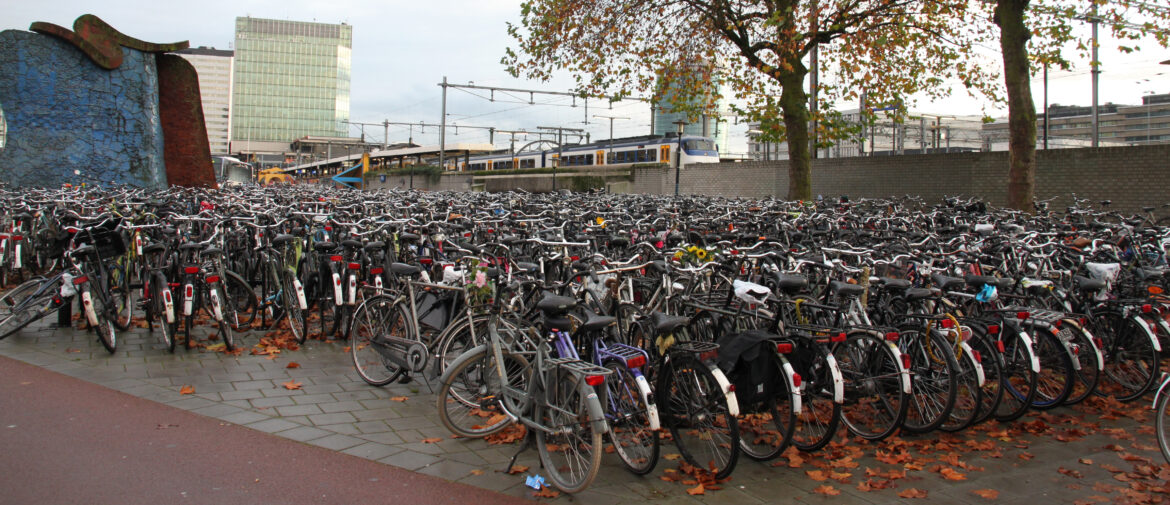
Bicycles outside Utrecht railway station, the Netherlands – photo from Wikimedia
Bio-energy
Bio-energy is another source of power that has supported humans for centuries. The earliest form of this type of energy is the burning of wood for warmth and cooking at the household level, and this is still an important activity for rural communities around the world. According to the United Nations Food and Agriculture Organisation, wood fuel contributes to more than half of the energy consumption in 22 countries of sub-Saharan Africa, and over two-thirds of all households in Africa use wood as their main fuel for cooking, heating and water boiling.
The most common way of burning wood in Africa is the manufacturing of charcoal, and this is arguably one the primary reasons for deforestation of woodlands. Using charcoal from bamboo, a giant grass, would reduce the pressure on woody trees, and when I was the Director-General of INBAR, I regularly made the point that bamboo charcoal is as “good” as wood charcoal. Planting bamboo for energy, especially in Africa, would be a smart solution for off-the-grid cheap, renewable and sustainable household energy.
In Europe, wood may be burned in barbecues and in open fire places, but it is not a primate source of heating at the household level. However, wood pellets are used to generate energy at industrial scale, and recently the European Commission renewed its commitment to burning wood as a source of energy largely to help meet its target of cutting EU carbon emissions by 55% by 2030. Most of the wood pellets are currently imported into Europe from Canada and the USA, and they are supposed to come mainly from waste and dead wood, although there are questions about verification whether this is true.
The other area of controversy is the fact that burning wood pellets still emits greenhouse gases, and maybe as much as would be produced when burning coal. The agreed accounting methodology allows for these emissions to be ignored, as the waste wood would most likely have been burned, and the emissions would therefore have occurred anyway. Therefore, companies that burn wood pellets claim to provide “green energy”, and some have received millions in green energy subsidies.
There is clearly a need to clarify the carbon accounting methodology for burning wood fuel, but a safer form of bio-energy is biogas. This is produced from the decomposition of organic materials in the absence of oxygen. With the help of a range of bacteria, organic matter breaks down, releasing methane and carbon dioxide, which can be used for multiple applications.
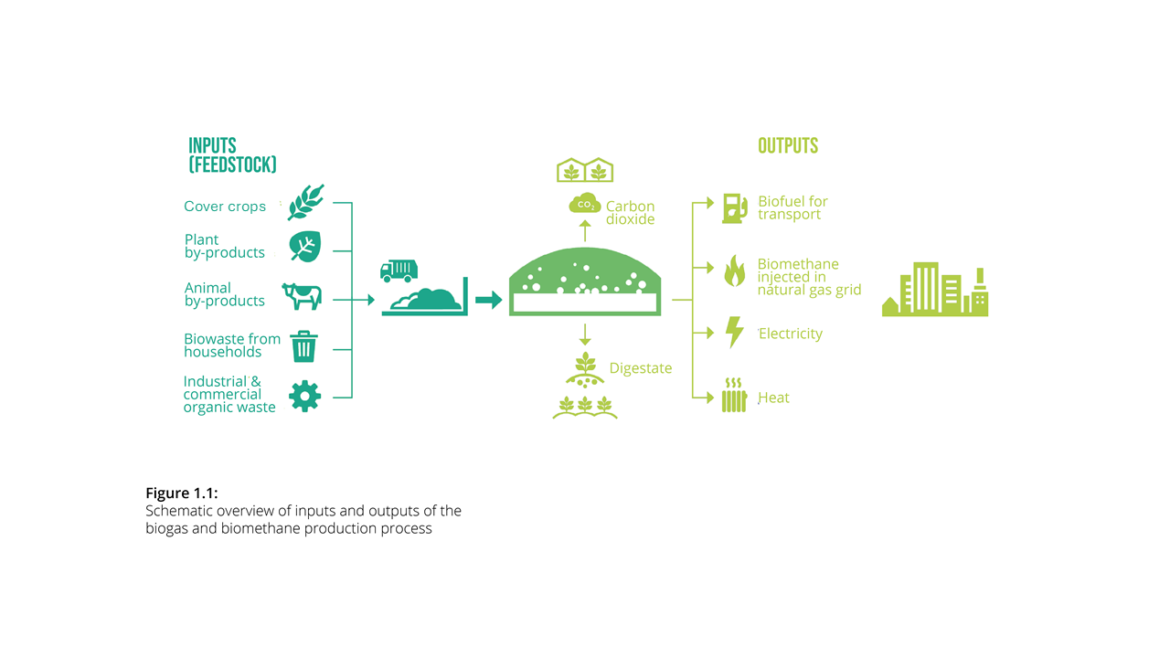
Information from: European Biogas Association
In the past, there has been a lot of debate and negative publicity about the use of food crops like maize for energy production, and I agree that burning food for energy is not the right way to generate power. But the use of agricultural waste products, grass or other fast-growing energy crops for energy production is not a problem, in my view. In fact, this is another way in which I have promoted the use of bamboo, especially waste and low-grade bamboo poles.
I had no idea that biogas is so important in Europe, but according to the European Biogas Association, 18 Billion cubic metres of biogas was produced in 2018, and earlier this year the European Commission announced plans to increase this to 35 billion cubic metres by 2030, which will apparently cover around 10% of the EU energy needs.
Solar energy
The sun is the most effective source of energy available, and the total amount of solar energy received on earth is vastly in excess of the world’s current and anticipated energy requirements. Solar energy can be converted to thermal energy which is mainly used for heating, while Photo-Voltaic panels harness this energy and transform it directly into electricity. According to the International Energy Agency, solar energy is now the cheapest form of energy, because the price of solar modules declined nearly 100% between 1976 and now.
Supporters of solar energy have told me that we have barely scratched the surface of the sun’s true potential to revolutionise the global power, but the necessary battery storage is currently one of the drawbacks. Batteries have limited storage capacity, and the components of batteries require precious, often rare elements that are in themselves non-renewable.
There is exciting news from NASA about the development of solid state batteries, which hold more energy than standard lithium-ion batteries. The amount of energy a battery can store is only one side of the equation, because it must also be able to discharge this energy at a rate sufficient to power large electronics, such as an electric aircraft. The latest research shows very positive results.
Wind energy
Another key renewable energy source is wind, both on-shore and off-shore. The Dutch used wind to power their water management systems in the 18th century, and I have seen many windmills when I was growing up in the Netherlands, but modern wind turbines are much more efficient.
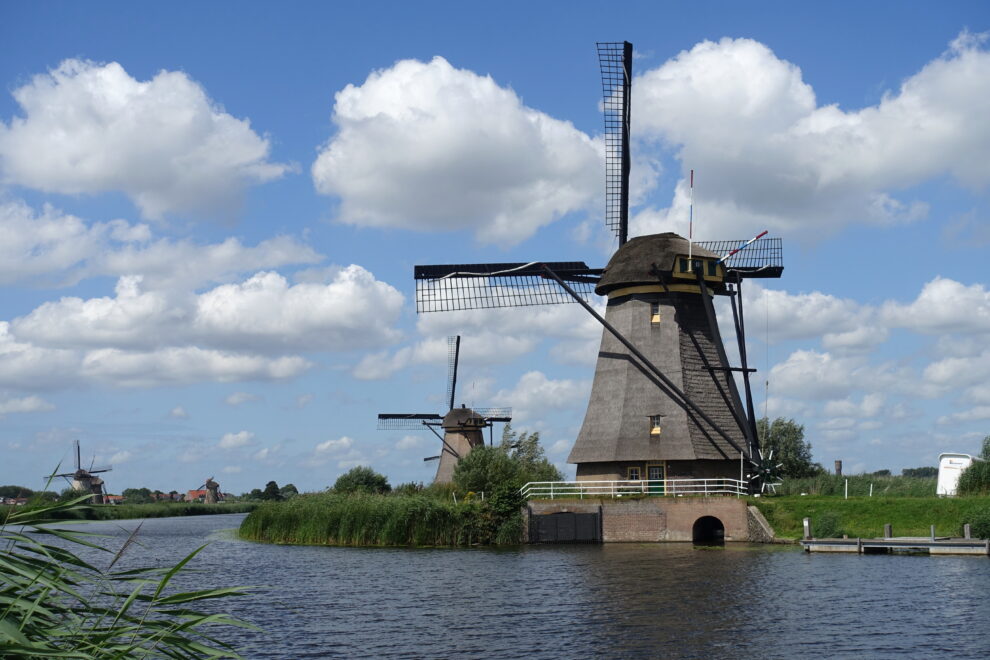
Windmills in Kinderdijk, the Netherlands. Photo by Luka Peternel, Wikimedia
According to the International Renewable Energy Agency, the cost of electricity from wind continues to fall, because wind turbines are becoming cheaper and more efficient. This is mainly due to larger rotor diameters and higher heights of the structures.
On-shore wind power has its social challenges, as many people complain about visual pollution, and there are concerns about birds being killed by the rotating blades. This is less of a problem for off-shore windfarms, but most turbines are bolted to the ground, and off-shore installations are therefore restricted to relatively shallow waters.
One of the areas that I find particularly interesting is floating off-shore wind power, and the possibility of have turbines on platforms further out in open water.
Both solar and wind energy are becoming so cheap that they will soon be more cost-effective than traditional fossil-fuel powered energy, and that is very positive news for Climate Friendly Travel.
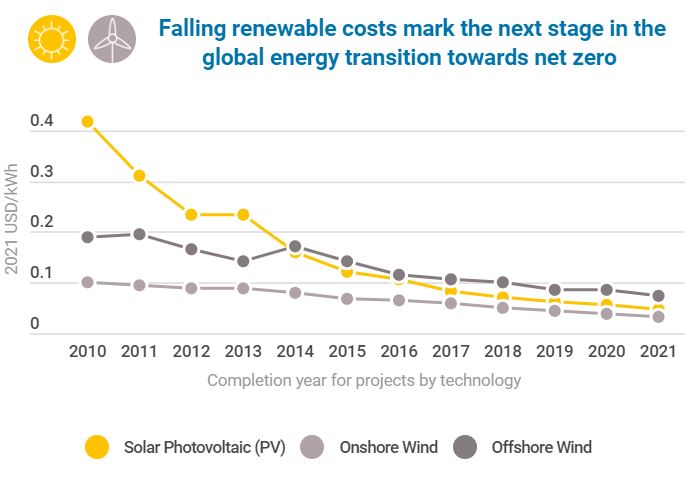
Information from International Renewable Energy Agency
Hydropower
Hydropower has historically provided the backbone of low-cost electricity in a significant number of countries around the world and is often still one of the cheapest ways to generate electricity where rivers with strong currents exist. In addition to the electricity generated, the reservoir behind the dam can provide a range of other services, like irrigation, fisheries, or recreation.
Dams have generated a lot of debate, and the environmental damage that some earlier large-scale hydropower installations have created caused the negative reaction of the environmental NGO community. I was involved in the consultation for the World Commission on Dams in the nineties, and the findings of their groundbreaking work highlighted that not all dams are bad for the environment, and that proper planning, consultation and management can result in hydropower systems that benefit the local community and maintain the health of the river. The final report – Dams and Development; a new framework for decision-making – was widely supported and used when it was published by Earthscan in 2000, but sadly I have not seen it mentioned in the last decade or so.
I believe that most people would agree is that small scale hydropower is good for local communities, and the installation of small turbines in rivers could generate enough power to support household energy needs. I saw one of the vortex turbines made by Turbulent at the Green School in Bali, and that provides most if not all of the energy required by the school.
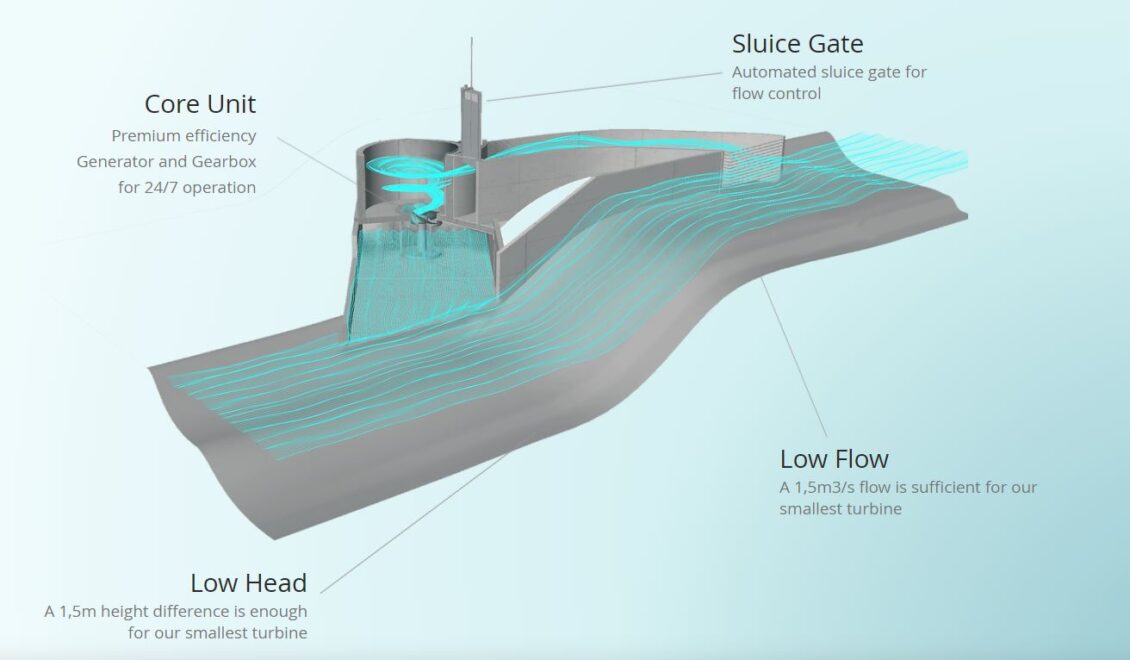
Energy from water vortex. information from www.Turbulent.be
Geo-thermal energy
I do not have direct experience with geothermal energy, although I have visited volcanic areas where it is harnessed. It utilises steam or hot water from geothermally active areas to provide electricity, but it is particularly relevant for volcanically active areas. Iceland lives of geothermal energy, but this is not possible in most of mainland Europe.
However, enhanced techniques have made geothermal energy also available elsewhere, and so called ground source heat pumps are now promoted in many countries. In fact, when we lived in Switzerland, this was a recommended form of off-the-grid energy. The technology relies on the fact that the earth at a certain depth beneath the surface remains at a relatively constant temperature throughout the year, warmer than the air above it during the winter and cooler in the summer. The heat pump takes advantage of this by transferring heat stored in the earth into a building during the winter, and transferring it out of the building and back into the ground during the summer. The ground, in other words, acts as a heat source in winter and a heat sink in summer.
Wave and tidal energy
I have been told that the potential energy of waves and tides is enormous, as oceans cover 71% of the Earth, and they are always in motion.
Constructions to harness wave energy could cause conflicts with tourism and local acceptance, and it is currently unclear on how harvesting wave energy could affect marine life. It still is in the early stages of development, and the costs of wave power are still fairly high compared to other forms of technology. But, there are some existing wave energy projects listed on this website: https://openei.org/wiki/Wave_Energy#:
Although not yet widely used, tidal energy also has virtually unlimited potential for future electricity generation. Tides are more predictable than the wind and the sun, but tidal energy is still suffering from relatively high cost and limited availability of sites with sufficiently high tidal ranges or flow velocities, thus constricting its total availability.
However, recent improvements in design and turbine technology suggest that the total availability of tidal power may be much higher than previously assumed and that economic and environmental costs may be brought down to competitive levels.
The Tidal Power Plant in the Eastern Scheldt storm surge barrier in the Netherlands (photo below) is the world’s largest commercial tidal installation of five turbines in an array.
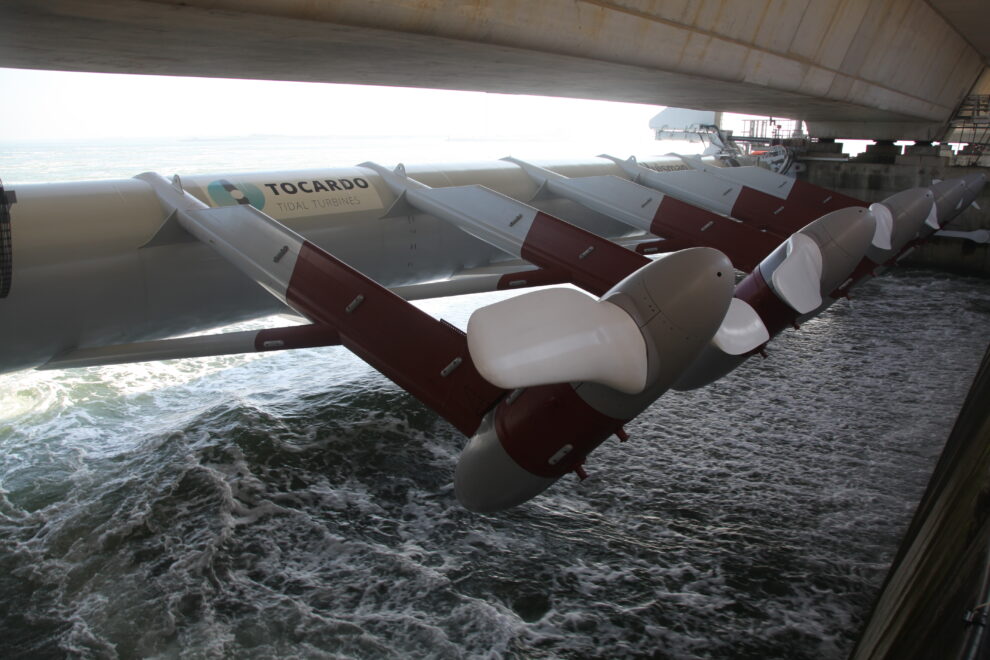
Hydrogen power
Finally, there is hydrogen as a potential source of clean power.
Demand for hydrogen continues to rise, but currently this is almost entirely supplied from fossil fuels. As a consequence, production of hydrogen is responsible for large CO2 emissions (I have read that currently this amounts to more than 830 million tonnes of carbon dioxide per year, equivalent to the CO2 emissions of the United Kingdom and Indonesia combined).
Green hydrogen is produced by splitting water into hydrogen and oxygen using renewable electricity, but less than 0.1% of global hydrogen production today comes from water electrolysis. Producing green hydrogen from low-carbon energy is still too expensive at the moment, but the International Energy Agency reckons that the cost of producing hydrogen from renewable electricity could fall up to 30% by 2030 as a result of declining costs of renewables and the scaling up of hydrogen production.
Nuclear energy
Although nuclear energy is not typically a renewable energy source, it is in many places considered as a low-carbon alternative to oil and gas.
Nuclear energy, also called atomic energy, is energy that is released in significant amounts in processes that affect atomic nuclei, the dense cores of atoms. There are two main forms of nuclear energy – fission splits atoms, while fusion combines them.
The traditional method of releasing nuclear energy is by controlled nuclear fission in devices called reactors, which now operate in many parts of the world for the production of electricity, and most of these use Uranium as the main source. Uranium is a rock that is mined, and nuclear power is therefore a non-renewable source of energy.
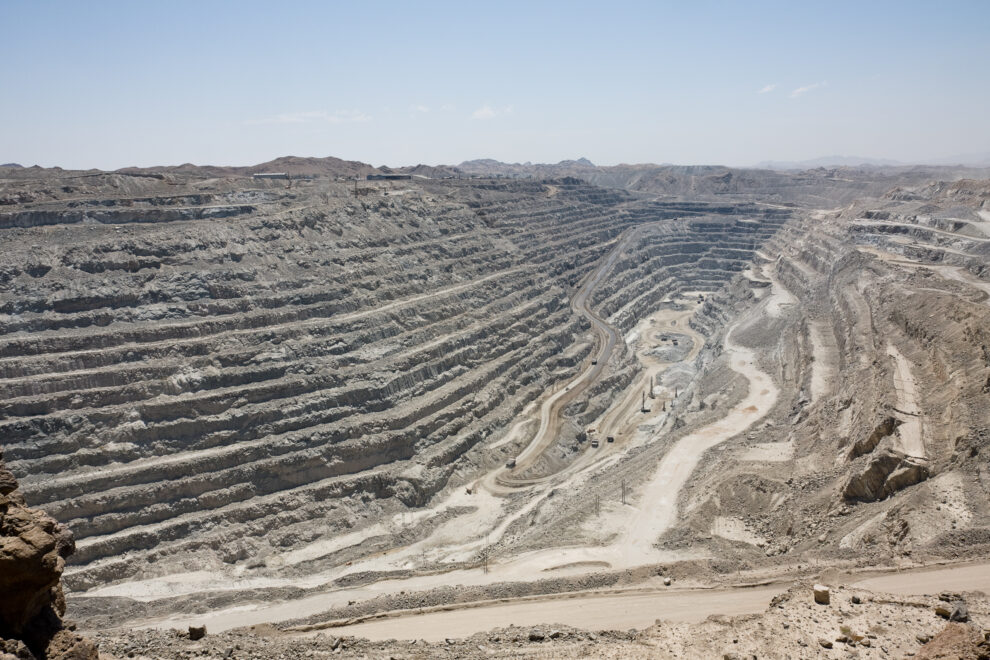
Rössing Uranium Mine in Namibia. photo by Ikiwaner, Wikimedia
The main concern with nuclear fission is the production of radioactive material that can cause irreversible health problems, and the risk of this material falling into the wrong hands for the production of nuclear weapons.
The latest developments are the introduction of Small Modular Reactors, which have a power capacity of up to 300 MW(e) per unit, which is about one-third of the generating capacity of traditional nuclear power reactors. According to the International Atomic Energy Agency more than 70 commercial small reactors are currently being developed around the world. Though they have lower upfront capital cost per unit, their economic competitiveness is still to be proven in practice once they are deployed, and they still include the risks for pollution and production of weapons.
Another, much safer method for obtaining nuclear energy is fusion instead of fission. Although practical fusion reactors have not yet been built yet, fusion energy for electric-power production is a real possibility, and it overcomes the risk of producing radio-active material, as a fusion reactor produces helium, which is an inert gas. Commercial fusion reactors promise an inexhaustible future safe source of electricity for countries worldwide, but this is currently more a dream than reality.

0 comments
Write a comment